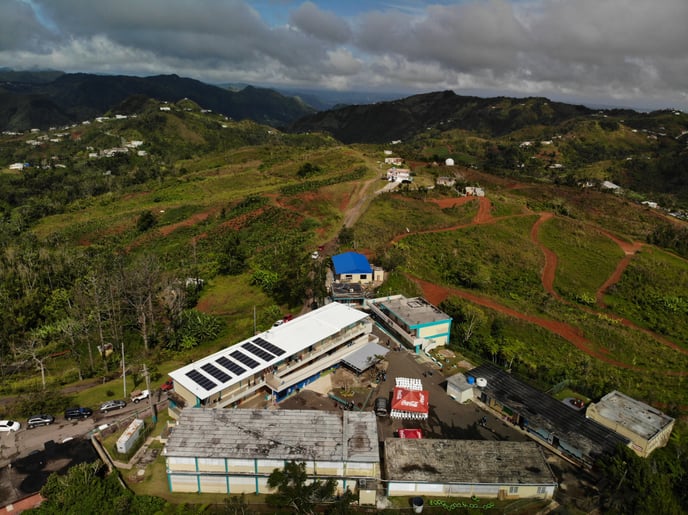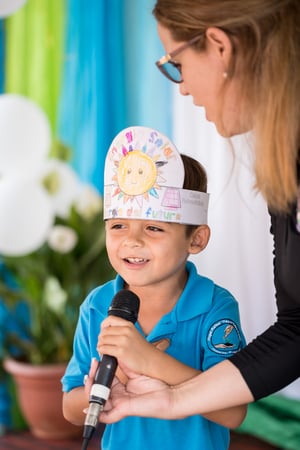In Puerto Rico, solar microgrids are ensuring that school refrigerators stay cold and that the food needed to feed students stays fresh.
For Josefina Leon Zayas High School in the remote mountains of Puerto Rico, losing power brings worry beyond interrupted learning time. In times of disaster, the school feeds the community. Located in Jayuya, a town of 16,000 people that is prone to mudslides that deter travel, the high school can make up to 5,000 community meals. Storing that much food used to make the school’s principal, Felix Gonzalez, uneasy. After all, during Hurricane Maria the school lost power for three months, and food spoiled.
 But now, thanks to a microgrid (46 kW solar array with 36 kWh of battery energy storage) the food remains refrigerated even if the central grid fails. Food security is an issue not only for the community, but also for some of the students, who receive their only “real food for the whole day” at the school, Gonzalez said. On top of that, the microgrid is saving the school about $20,000 per year in energy costs, a 50% reduction.
But now, thanks to a microgrid (46 kW solar array with 36 kWh of battery energy storage) the food remains refrigerated even if the central grid fails. Food security is an issue not only for the community, but also for some of the students, who receive their only “real food for the whole day” at the school, Gonzalez said. On top of that, the microgrid is saving the school about $20,000 per year in energy costs, a 50% reduction.
“We can use the money in other ways to be more effective in our classes,” Gonzalez said.
The school paid nothing for the microgrid; instead it was funded by donations and grants, part of the humanitarian effort following the devastation of Hurricane Maria. Because of the storm, Puerto Rico’s children have collectively missed out on more than 13 million full days of learning. The public education system shut down for two months as the island endured the largest power
 outage in U.S. history. Some schools remained without power long after, and many could not reopen for a full school day if refrigeration was not available to store food for student lunches. It took a year to fully restore the island’s electricity.
outage in U.S. history. Some schools remained without power long after, and many could not reopen for a full school day if refrigeration was not available to store food for student lunches. It took a year to fully restore the island’s electricity.The experience left many questioning the practicality of relying solely on the island’s power grid in an age of climate disasters. A central grid is vulnerable to cascading failures because of its interconnected structure.
Out of this concern grew a pilot program launched by the Rocky Mountain Institute, Save the Children and the Kinesis Foundation to create school microgrids. So far, the program has built solar microgrids in 10 schools, including in Jayuya, serving 3,600 students in all. The organizations have plans for more.
Last Updated: 5/25/2023

Generation180 has toolkits, guides, reports, and more to help your school go solar. Visit SolarForAllSchools.org for even more resources.
Want more about where this came from? Download our Brighter Future 2020 Report by clicking here.
